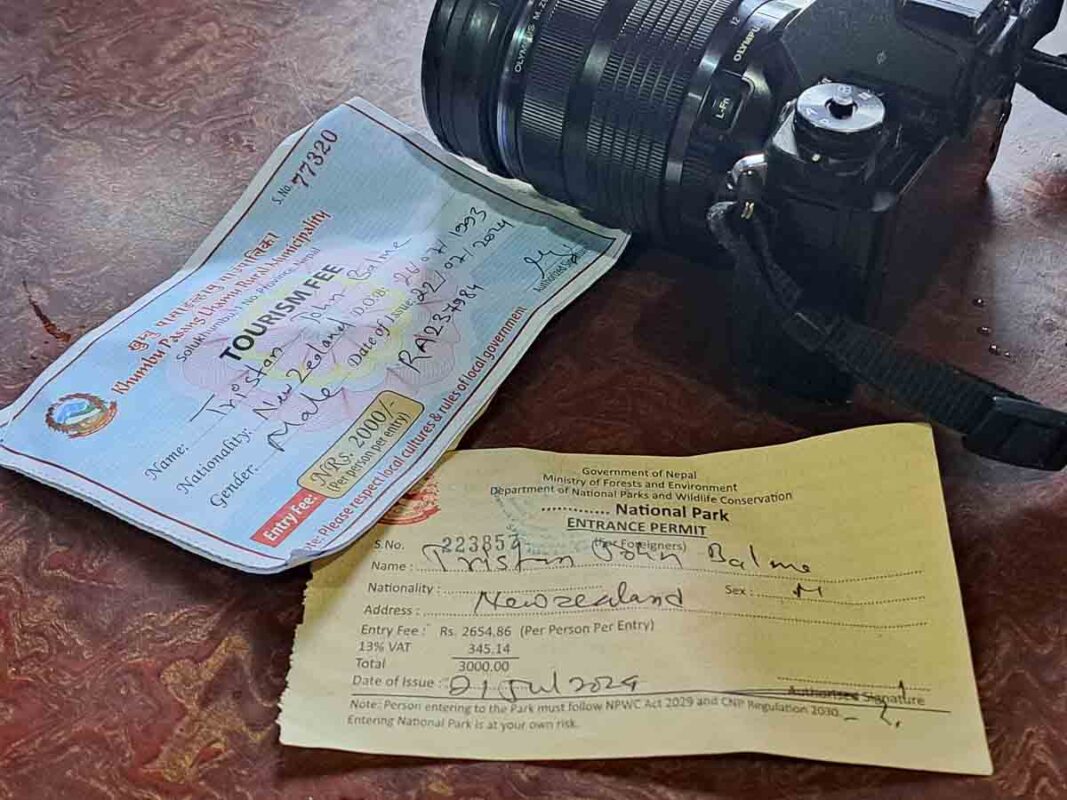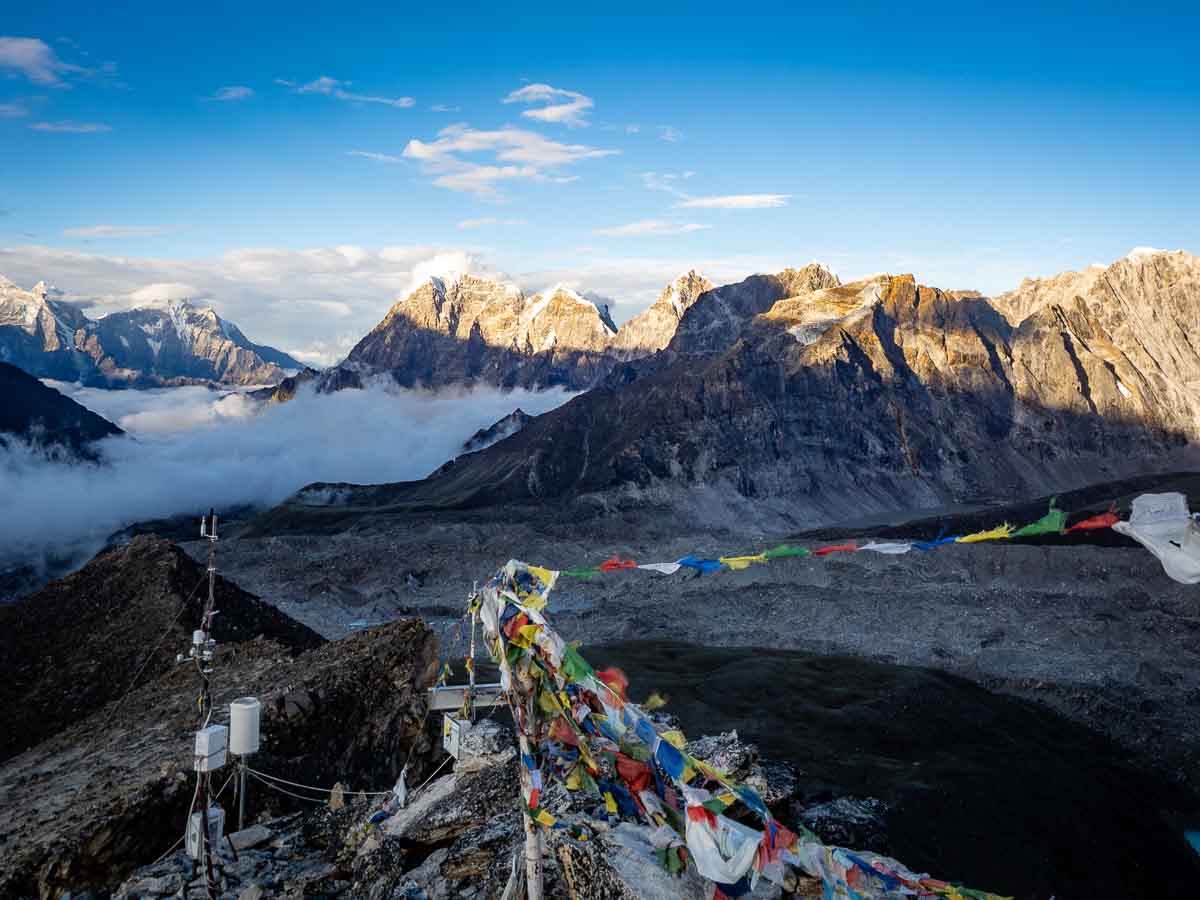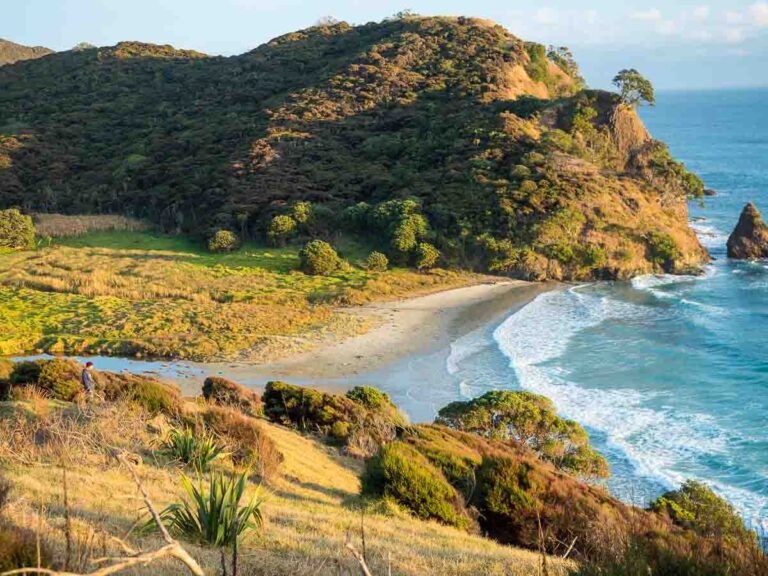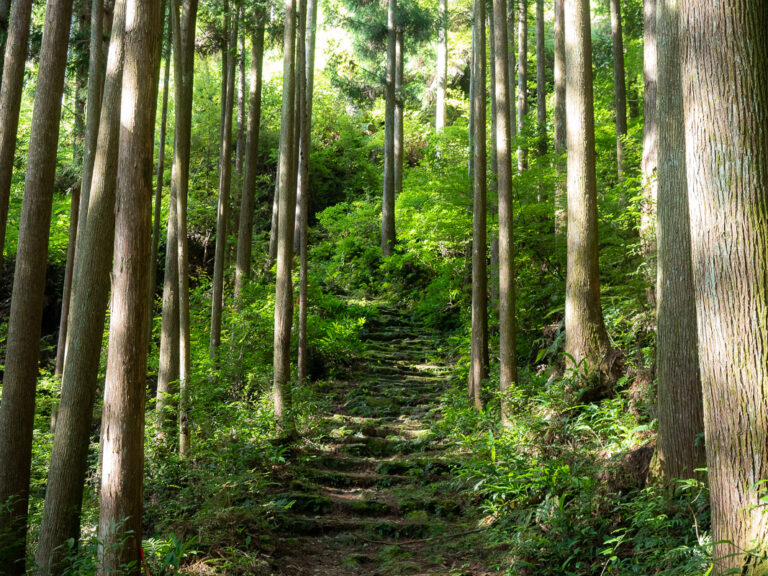Everest Base Camp Cost (How Much I Paid for 14 Days Trekking)
Trekking to Everest Base Camp is an unforgettable adventure, but it also requires a good chunk of coin. When I factor in flights, permits, accommodation, and extras, trekking Everest Base Camp cost me roughly $1988 USD over 14 days.
Unfortunatly, when planning the trip, I struggled to find good information on how much I needed to budget, and what other expenses I could expect outside the package tour itself.
(Like tipping)
((working out how much to tip is STRESSFUL))
So in this blog post I break down how to properly budget for your EBC Trek, what you’ll need to pay for up front, and what cash you’ll need to bring along for small costs along the way.
| Quick Summary: Everest Base Camp Cost | Per Person Cost |
|---|---|
| Package Tour: Includes guide, accommodation, 3 meals a day airport pickup, and flights to/from lukla | $1250 USD |
| Water: Your best option is packing water purification tablets | $10 |
| Hot showers: the first few days showers are free, and later you’ll need to pay around $8 for shower. Up to you if you feel you need it! | $48 |
| Extra Food and Drink: Snacks, drinks, celebratory beers, and meals where not provided by the tea house | $99 |
| Wifi: cell coverage is patchy for the first few days and non-existant after that. Tea houses sell satellite wifi vouchers for around $6. | $66 |
| Tipping: Expect to pay around $200 USD to tip your porter and guide. You can read more on tipping in this blog post. | $200 |
| Travel Insurance: You’ll most likely need a special insurance policy to cover high altitude trekking. (See who i recommend here) | $315 |
| Total | $1988 |
Table of Contents
Firstly, DIY Trekking vs. a Guided Tour
99% of people will book this adventure as a package tour with a trekking company. That’s what I did, and what I’d recommend.
However, it is still permitted to trek Everest Base Camp solo (or unguided).
I say still because in 2023 the Nepalese government banned self guided trekking in all parts of Nepal EXCEPT for the Khumbu region (where Everest is).
If you do chose to go this route, you’ll need to cover the following expenses yourself. If taking a tour, skip ahead as all these are included.
- Permits
- Domestic flights
- Accomodation
- Meals
Jump to the end if you want to read about the costs of a self guided trip, otherwise keep reading for us package tour people 🙂
How Much I Paid For 14 Days of Trekking
Here’s a comprehensive breakdown of the expenses I incurred.
High Altitude Travel insurance
Comprehensive travel insurance is a must, especially for high-altitude treks. It covers medical emergencies, helicopter evacuation (which can cost as much as $10,000), and trip cancellation. I paid $745 for full coverage. Costs vary from one provider to the next, so I recommend budgeting around $1000.
I recommend World Nomads Travel Insurance for most people. You can get a 30 second free online quote HERE.
Otherwise, checkout this blog post where I reviewed 5 travel insurance providers who specialise in high altitude trekking cover.
The Cost of Meals and Additional Food and Drink
Most tour companies will cover all the costs of food for your hike. They will say something like ‘3 meals a day’ or ‘B/L/D’ (Breakfast, lunch, dinner) on the package inclusions.
This means you’ll get to order 1 menu item from each tea house for each meal, breakfast, lunch and dinner.
My guide also specifically said we were allowed 4 cups of tea every day too. (Which actually meant 4 cups of any hot drink off the menu, like coffee, chai, and herbal tea too!)
If you want extra dishes, sweets, snacks, beer, or soft drinks, you’ll have to pay for that yourself – and settle your bill when you leave each tea house.
We often ordered an extra dish to share (like a plate of momos – YUM!). A beer to celebrate the days hike. Or a bottle of coke to help replenish sugars and electrolytes. In particular, I found coke really satiating when the effects of the altitude started kicking in!
Some prices for reference;
- A Beer – 800 NPR or $6 USD
- A plate of Momos – 700 NPR or $5.50 USD
- A Dahl Baht set menu – 1100 NPR or $8 USD
- A bottle of coke – 450 NPR – or $3.50 USD
Note: There’s an unspoken rule that you should only eat at YOUR tea house, as that’s how they make their money. It’s not allowed (or at least good manners) to go other tea houses for food, or resurants. It is OK however to have your main meal at the tea house and then go to a bar or snooker hall afterwards.



Recommendation: I’d allow for $9 per day per person (or 1200 NPR) to cover additional food, like an entre meal, a beer, or a few snacks while hiking.
Tipping:
Hiring a guide and porter ensures safety and enjoyment on the trek. I paid $15 per day for a guide and $15 per day for a porter. There’s also a tip to factor in.
Tipping is customary, so factor in an additional $200-$250 for the guide and $50-$100 for the porter at the trek’s end.
A common approach is to tip as a percentage of the total tour price. This ranges from 10-15% of the trek cost. Another method is to tip based on a daily rate.
Note that in large groups your total tip should be slightly more, but your per person tip will be less. Guides elicit a higher tip than assistant guides, whom are tipped more than porters. If you’re trekking for longer, you’ll also need to tip more! … confusing huh?
I’ve written a full guide on working out your tip amount for Everest base camp here.
Recommendation: I tipped 225 USD for the two of us. Budget at least this amount and some extra if you’re getting a porter. If you’re in a large group, allow a little less.
Gear and equipment (If you don’t already have it!)
I’m an avid hiker, so I had the necessary hiking gear. If you don’t, here’s a checklist to get you started:
- Sturdy hiking boots: Don’t compromise on quality! ($150-$250)
- Backpack: Choose comfort over style (around $100-$200)
- Warm sleeping bag: Rated for at least -15°C/-5°F ($100-$300)
- Thermal wear: Essential for layering ($50-$100)
- Trekking poles: Improve stability ($50-$100)
- Headlamp: Handy for pre-dawn starts ($30-$50)
- Water bottles or hydration bladder: Stay hydrated ($20-$50)
Optional Additional Services
These additional services can make your trek even more comfortable, and some can even be quite helpful! Here are some nice-to-have items to budget for.
Wifi Internet
If you need to stay connected, some teahouses offer internet access for purchase using internet cards, which generally cost around $50. Connectivity can be spotty in remote areas, so it’s best to manage expectations.
Wifi: cell coverage is patchy for the first few days and non-existant after that. Tea houses sell satellite wifi vouchers for around $6.
Hot showers
A hot shower can feel like pure bliss, especially after a long day of trekking, particularly at higher altitudes where the nights get chilly. Not all teahouses offer them, and they cost around $10 per shower.
Laundry Services
Most teahouses offer laundry service for a fee. This is a great way to freshen up your clothes during the trek. Prices typically range based on weight.
Side trips (Book ahead of time)
Adding a side trip to Gokyo Lakes (around $100 extra) can enhance your experience, but also adds to the cost.
Popular side trips include;
- Gokyo Lake
- Chola Pass
- The Three Passes
The best way to think of this cost is that you’re just making your trek longer, so you’ll be paying for additional food, accomation, and staff costs (Guide/Porter).
Souvenirs
If you do want to shop, Namche is the best place to do it.
Expect to find hand-crafted items for $10-50, and small thangka paintings (Tibetan Buddhist scrolls) for $30-$100. Bargaining is expected at local shops but bargain respectfully. Aim for a fair price, not the absolute lowest.
Tip: Prices are obviously inflated compared to in Kathmandu. I waited till we were back and spent an afternoon in Thamel, the main shopping district of Kathmandu, where we could get all the same souvenirs for 1/3rd of the price.
Contingency for Emergencies and Unforeseen delays
Obviously travel insurance will cover any big events, but it’s wise to budget a little extra for small things that go wrong.
The Himalayas are known for their unpredictable weather. Allow extra days in your itinerary (and budget) to avoid additional accommodation costs because of delays caused by bad weather.
Plan for the unexpected. Medical/Healthcare issues can be expensive (highlighting the importance of comprehensive travel insurance). Even if its just food poisoning, a cold, flu. or minor altitude sickness, you’ll want to grab some medication and supplements to help you feel better.
Costs of doing Everest Base Camp Self Guided
As mentioned above, it is possible to DIY the everest base camp trek. While that’s not what I did, I made sure to ask my guide all about it and what extra cost are involved.
1. Trekking Permits
You’ll first need to obtain trekking permits. You have two options:
- Do-It-Yourself: You can obtain permits upon arrival in Kathmandu at the Tourist Service Centre or the Department of National Parks and Wildlife Conservation. This is a cost-effective option but requires some research and navigation.
- Trekking Company Assistance: Many trekking companies offer to handle the permit process for you (for a fee, of course). This can save you time and hassle, especially if you’re unfamiliar with the process – even if you aren’t taking their guiding service
- Permits include the conservation area permit and Trekkers’ Information Management System (TIMS) card, costing around $500 in total.

2. Domestic flights (Kathmandu to Lukla)
Budget around $300-$500 for a round trip. Booking a return flight with buffer days can help you avoid additional costs incase you experience any delays.
This can be booked through an agent or trekking company too which is great as they handle any rebookings due to weather delaying these flights.
Weather disruptions into lukla are EXTREMELY common. Especially in summer (when I did it) where only 50% of days are flying days.

3. Accommodation
You’ll need to organise all your accommodation in teahouses. Without local connections, you’ll pretty much just need to turn up and ask for a free room. These traditional inns offer basic but comfortable accomdation and meals. One I stayed in cost $15 per night but this price varies based on how busy the route is, and where you’re are.
If you crave extra comfort and amenities, luxury lodges are available at higher price points of approximately $50 per night.
4. Meals
You’ll obviously need to cover all your meals. More on this in the food section below, but budget around 1000 – 1400 NPR or $12 USD per meal which covers one menu item and a hot drink.
Thats around $35 USD per day on food.
I’d also allow $9 per day extra s mentioned above for additional food, drink, beer, snacks etc.
Nepal Trekking Cheatsheet
🚑 Should I buy travel insurance for Nepal?
100% YES! — Nepal has now introduceed “free” healthcare but it’s only for citizens! Tourists need travel insurance in case anything happens on your visit. Also be aware many policies won’t cover high altitude hiking as it’s a high risk activity!
(that’s right, check the t&c’s on your complimentary credit card insurance)
I highly recommend World Nomads as you can get specific add-ons for high altitude hiking UP TO 6000m (Which most travel insurance companies don’t offer!)
🎫 Do I need a visa for Nepal?
Probably not — Nepal now provide a visa on arrival (VoA) for most western countires which allows you stay for up to 90 days. However, some other countries do need a pre-approved eVisa (check here!). A single entry 15 day Nepal tourist visa costs USD$30, a 30 day visa costs $50 and a 90 day visa costs $125.
When paying for your visa at the airport, you’ll need either USD or NPR cash.. or a debit card capable of this transaction. For some reason they don’t accept credit cards.
💉Do I need any vaccinations for Nepal?
YES! Make sure you are up-to-date with all your vaccines. Common travel vaccines include Hep A/B + Typhoid, and Diphtheria + Tetanus.
Rabies is an issue in Nepal but the vaccine is expensive and ineffective as a preventative measure (it only lasts a few years and you’ll need to get them again if you require treatment). If bitten by a stray dog seek immediate medical attention! There is however, a rebies vaccination program in the Khumbu region (Everst) so chances of infection are low.
As always, talk to your GP or specialised travel doctor a few weeks BEFORE you leave.
🏩 What’s the best Nepal Trekking companies?
I personally had an amazing excperience with Nepal Hiking Team.
You can read all the operators i reccommend in this article
💸How do you pay for things in Nepal?
Cash is king in Nepal, so you’ll want to get some folding tender out from an ATM when you land. Larger businesses and hotels will take Debit / Credit Card but most resturants, and street vendors want cash.
When trekking, ATMs are few and far between so dont get stuck without cash
I personally use a Wise debit card for all my international money needs as they only convert the funds when you make payment, plus they offer a much better spread (margin on the true exhange rate) than the banks do. They work in all the Nepalese ATMs I tried.
🚌 What’s the public transport like in Nepal?
There is a good basic network of local and inter-city busses in Nepal and travel this way is very cheap. Domestic flight are also very affordable and a far more comfortable option. Checkout Bussewa for booking bus tickets online.
📲 How do I get internet/data/wifi in Nepal and while trekking?
This one needs a whole nother article, but the short version is prepaid SIM cards are cheap and availible to tourists and locals alike (You don’t need a pricey tourst SIM!)
I got an Ncell SIM card from a vendor in Thamel, Kathmandu for around $10 and this lasted me my whole trip.
NB: Make sure to bring your passport!
Another option is an Airalo eSIM. This is a little more expensive but works from the moment you land is is SOOOOO much easier than the in person verification process required for a local sim.
✈️ What’s the best site to buy flights to Nepal?
For finding cheap flights, I recommend Skyscanner. Once you find the flight you’re looking for, I’d then suggest booking directly with the carrier (even if it costs a few $$ more than with one of the agreggators/agencies).
💧Can you drink the water in Nepal?
Safest not to — tap water in Nepal may be OK (the locals drink it) but is generally untreated and not reccommended for tourists. Purchase bottled water for drinking and teeth brushing, or get water purification tablets.
🏔️💧Can you drink the water while trekking in Nepal?
Yes — but make sure to purify it first. I always use these Aquatabs
There are lots of taps and water sources along the trek. (your guide will show you). And buying bottled water in the mountains is extremely expensive. If you want to drink water from the rivers and streams you generally can but ALWAYS follow best practice and drink from fast flowing water as far up stream as possible. I’d also recommend a Brita Water Bottle for rehydrating on the trail safely.







